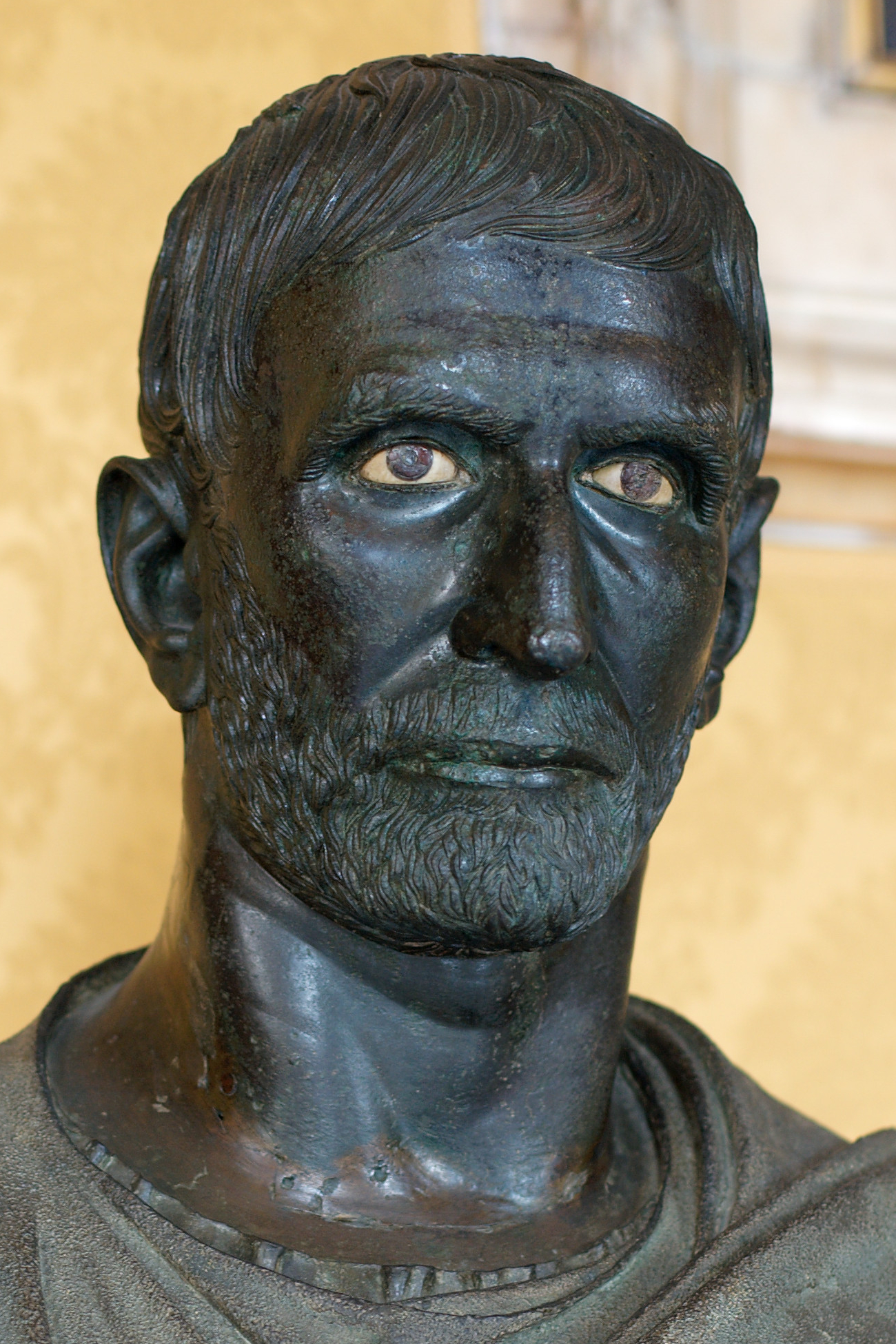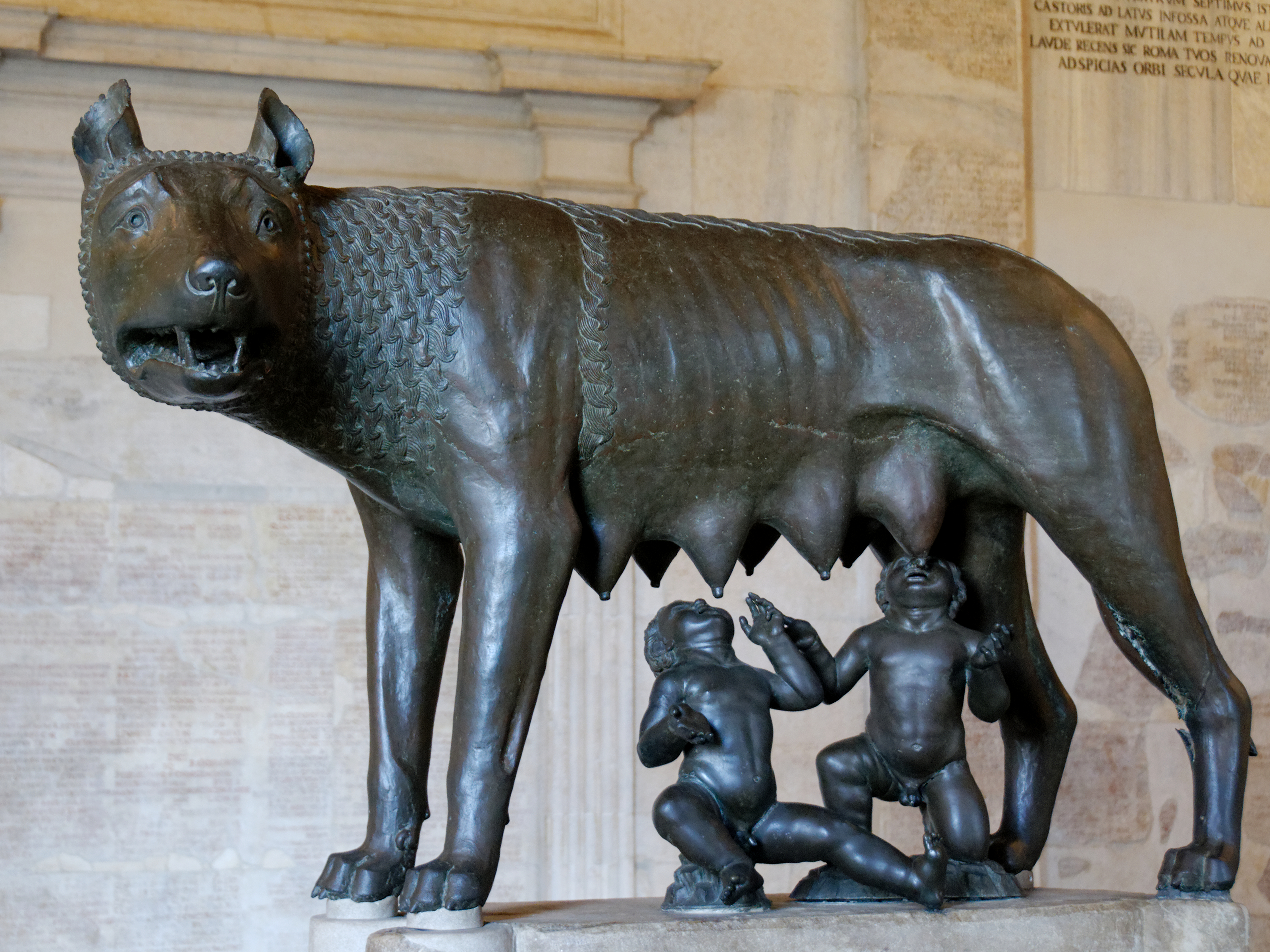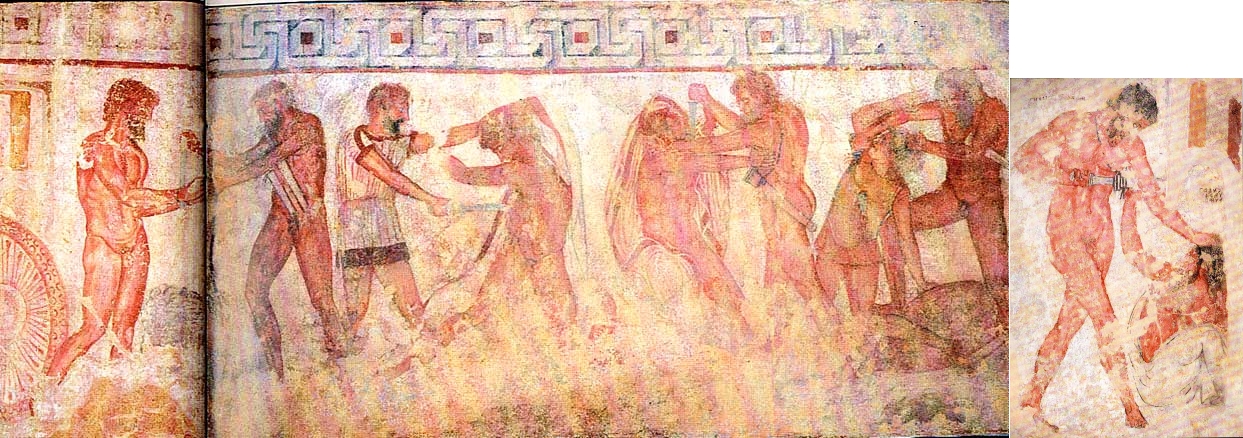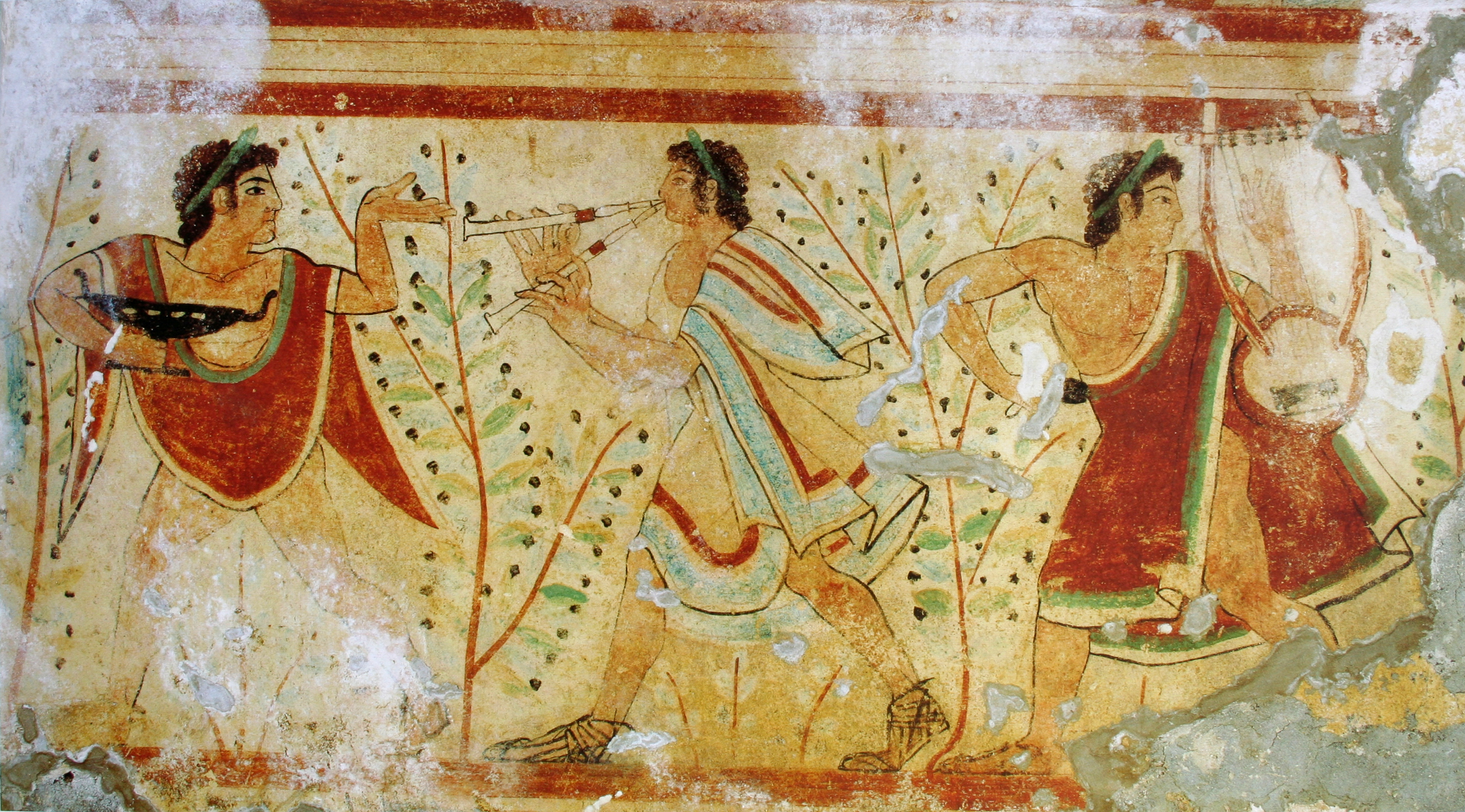|
Pleb
In ancient Rome, the plebeians (also called plebs) were the general body of free Roman citizens who were not patricians, as determined by the census, or in other words "commoners". Both classes were hereditary. Etymology The precise origins of the group and the term are unclear, but may be related to the Greek, ''plēthos'', meaning masses. In Latin, the word is a singular collective noun, and its genitive is . Plebeians were not a monolithic social class. Those who resided in the city and were part of the four urban tribes are sometimes called the , while those who lived in the country and were part of the 31 smaller rural tribes are sometimes differentiated by using the label . ( List of Roman tribes) In ancient Rome In the annalistic tradition of Livy and Dionysius, the distinction between patricians and plebeians was as old as Rome itself, instituted by Romulus' appointment of the first hundred senators, whose descendants became the patriciate. Modern hypotheses date ... [...More Info...] [...Related Items...] OR: [Wikipedia] [Google] [Baidu] |
Roman Republic
The Roman Republic ( la, Res publica Romana ) was a form of government of Rome and the era of the classical Roman civilization when it was run through public representation of the Roman people. Beginning with the overthrow of the Roman Kingdom (traditionally dated to 509 BC) and ending in 27 BC with the establishment of the Roman Empire, Rome's control rapidly expanded during this period—from the city's immediate surroundings to hegemony over the entire Mediterranean world. Roman society under the Republic was primarily a cultural mix of Latin and Etruscan societies, as well as of Sabine, Oscan, and Greek cultural elements, which is especially visible in the Roman Pantheon. Its political organization developed, at around the same time as direct democracy in Ancient Greece, with collective and annual magistracies, overseen by a senate. The top magistrates were the two consuls, who had an extensive range of executive, legislative, judicial, military, and religious powe ... [...More Info...] [...Related Items...] OR: [Wikipedia] [Google] [Baidu] |
Concilium Plebis
The ''Concilium Plebis'' ( English: Plebeian Council., Plebeian Assembly, People's Assembly or Council of the Plebs) was the principal assembly of the common people of the ancient Roman Republic. It functioned as a legislative/judicial assembly, through which the plebeians (commoners) could pass legislation (called plebiscites), elect plebeian tribunes and plebeian aediles, and try judicial cases. The Plebeian Council was originally organized on the basis of the Curia but in 471 BC adopted an organizational system based on residential districts or tribes. The Plebeian Council usually met in the well of the Comitium and could only be convoked by the tribune of the plebs. The patricians were excluded from the Council. History From 509 to 471 BC When the Roman Republic was founded in 509 BC, the Roman people were divided into a total of thirty curiae. Plutarch and Dionysus of Helicarnassus believed that these curiae were subdivisions of the three Romulean Tribes. The curiae wer ... [...More Info...] [...Related Items...] OR: [Wikipedia] [Google] [Baidu] |
Patrician (ancient Rome)
The patricians (from la, patricius, Greek: πατρίκιος) were originally a group of ruling class families in ancient Rome In modern historiography, ancient Rome refers to Roman civilisation from the founding of the city of Rome in the 8th century BC to the collapse of the Western Roman Empire in the 5th century AD. It encompasses the Roman Kingdom (753–50 .... The distinction was highly significant in the Roman Kingdom, and the early Roman Republic, Republic, but its relevance waned after the Conflict of the Orders (494 BC to 287 BC). By the time of the late Republic and Roman Empire, Empire, membership in the patriciate was of only nominal significance. The social structure of Ancient Rome revolved around the distinction between the patricians and the plebeians. The status of patricians gave them more political power than the plebeians. The relationship between the patricians and the plebeians eventually caused the Conflict of the Orders. This time period ... [...More Info...] [...Related Items...] OR: [Wikipedia] [Google] [Baidu] |
Plebeian Tribunes
Tribune of the plebs, tribune of the people or plebeian tribune ( la, tribunus plebis) was the first office of the Roman state that was open to the plebeians, and was, throughout the history of the Republic, the most important check on the power of the Roman Senate and magistrates. These tribunes had the power to convene and preside over the ''Concilium Plebis'' (people's assembly); to summon the senate; to propose legislation; and to intervene on behalf of plebeians in legal matters; but the most significant power was to veto the actions of the consuls and other magistrates, thus protecting the interests of the plebeians as a class. The tribunes of the plebs were sacrosanct, meaning that any assault on their person was punishable by death. In imperial times, the powers of the tribunate were granted to the emperor as a matter of course, and the office itself lost its independence and most of its functions.'' Oxford Classical Dictionary'', 2nd Ed. (1970), "Tribuni Plebis." It ... [...More Info...] [...Related Items...] OR: [Wikipedia] [Google] [Baidu] |
Lex Hortensia
The ''lex Hortensia'', also sometimes referred to as the Hortensian law, was a law passed in Ancient Rome in 287 BC which made all resolutions passed by the Plebeian Council, known as ''plebiscita'', binding on all citizens. It was passed by the dictator Quintus Hortensius Quintus Hortensius Hortalus (114–50 BC) was a famous Roman lawyer, a renowned orator and a statesman. Politically he belonged to the Optimates. He was consul in 69 BC alongside Quintus Caecilius Metellus Creticus. His nickname was '' Dionys ... in a compromise to bring the plebeians back from their secession to the Janiculum. It was the final result of the long struggle between patricians and plebeians, where the plebeians would periodically secede from the city in protest ('' secessio plebis'') when they felt they were deprived of their rights. The law contained similar stipulations of the two earlier laws, the '' lex Valeria-Horatia'' of 449 BC and ''lex Publilia'' of 339 BC. Unlike the ... [...More Info...] [...Related Items...] OR: [Wikipedia] [Google] [Baidu] |
Gens
In ancient Rome, a gens ( or , ; plural: ''gentes'' ) was a family consisting of individuals who shared the same nomen and who claimed descent from a common ancestor. A branch of a gens was called a ''stirps'' (plural: ''stirpes''). The ''gens'' was an important social structure at Rome and throughout Italia during the period of the Roman Republic. Much of individuals' social standing depended on the gens to which they belonged. Certain gentes were classified as patrician, others as plebeian; some had both patrician and plebeian branches. The importance of membership in a gens declined considerably in imperial times, although the ''gentilicium'' continued to be used and defined the origins and dynasties of Roman emperors. ''Harper's Dictionary of Classical Literature and Antiquities'', Second Edition, Harry Thurston Peck, Editor (1897) '' Oxford Classical Dictionary'', 2nd Ed. (1970) Origins The word ''gens'' is sometimes translated as "race", or "nation", mean ... [...More Info...] [...Related Items...] OR: [Wikipedia] [Google] [Baidu] |
Twelve Tables
The Laws of the Twelve Tables was the legislation that stood at the foundation of Roman law. Formally promulgated in 449 BC, the Tables consolidated earlier traditions into an enduring set of laws.Crawford, M.H. 'Twelve Tables' in Simon Hornblower, Antony Spawforth, and Esther Eidinow (eds.) ''Oxford Classical Dictionary'' (4th ed.) In the Forum, "The Twelve Tables" stated the rights and duties of the Roman citizen. Their formulation was the result of considerable agitation by the plebeian class, who had hitherto been excluded from the higher benefits of the Republic. The law had previously been unwritten and exclusively interpreted by upper-class priests, the pontifices. Something of the regard with which later Romans came to view the Twelve Tables is captured in the remark of Cicero (106–43 BC) that the "Twelve Tables...seems to me, assuredly to surpass the libraries of all the philosophers, both in weight of authority, and in plenitude of utility". Cicero scarcely exa ... [...More Info...] [...Related Items...] OR: [Wikipedia] [Google] [Baidu] |
Roman Naming Conventions
Over the course of some fourteen centuries, the Romans and other peoples of Italy employed a system of nomenclature that differed from that used by other cultures of Europe and the Mediterranean Sea, consisting of a combination of personal and family names. Although conventionally referred to as the ''tria nomina'', the combination of praenomen, nomen, and cognomen that have come to be regarded as the basic elements of the Roman name in fact represent a continuous process of development, from at least the seventh century BC to the end of the seventh century AD. The names that developed as part of this system became a defining characteristic of Roman civilization, and although the system itself vanished during the Early Middle Ages, the names themselves exerted a profound influence on the development of European naming practices, and many continue to survive in modern languages. Overview The distinguishing feature of Roman nomenclature was the use of both personal names and reg ... [...More Info...] [...Related Items...] OR: [Wikipedia] [Google] [Baidu] |
Lex Canuleia
The (‘ Canuleian law’), or , was a law of the Roman Republic, passed in the year 445 BC, restoring the right of (marriage) between patricians and plebeians. Canuleius' first rogation Five years earlier, as part of the process of establishing the Twelve Tables of Roman law, the second decemvirate had placed severe restrictions on the plebeian order, including a prohibition on the intermarriage of patricians and plebeians. Gaius Canuleius, one of the tribunes of the plebs, proposed a '' rogatio'' repealing this law. The consuls, Marcus Genucius Augurinus and Gaius Curtius Philo, vehemently opposed Canuleius, arguing that the tribune was proposing nothing less than the breakdown of Rome's social and moral fabric, at a time when the city was faced with external threats. Undeterred, Canuleius reminded the people of the many contributions of Romans of lowly birth, including several of the kings, and pointed out that the Senate had willingly given Roman citizenship to defeated ... [...More Info...] [...Related Items...] OR: [Wikipedia] [Google] [Baidu] |
Ancient Rome
In modern historiography, ancient Rome refers to Roman civilisation from the founding of the city of Rome in the 8th century BC to the collapse of the Western Roman Empire in the 5th century AD. It encompasses the Roman Kingdom (753–509 BC), Roman Republic (509–27 BC) and Roman Empire (27 BC–476 AD) until the fall of the western empire. Ancient Rome began as an Italic settlement, traditionally dated to 753 BC, beside the River Tiber in the Italian Peninsula. The settlement grew into the city and polity of Rome, and came to control its neighbours through a combination of treaties and military strength. It eventually dominated the Italian Peninsula, assimilated the Greek culture of southern Italy (Magna Grecia) and the Etruscan culture and acquired an Empire that took in much of Europe and the lands and peoples surrounding the Mediterranean Sea. It was among the largest empires in the ancient world, with an estimated 50 to 90 million inhabitants, roughly ... [...More Info...] [...Related Items...] OR: [Wikipedia] [Google] [Baidu] |
Roman Magistrates
The Roman magistrates were elected officials in Ancient Rome. During the period of the Roman Kingdom, the King of Rome was the principal executive magistrate.Abbott, 8 His power, in practice, was absolute. He was the chief priest, lawgiver, judge, and the sole commander of the army.Abbott, 8Abbott, 15 When the king died, his power reverted to the Roman Senate, which then chose an Interrex to facilitate the election of a new king. During the transition from monarchy to republic, the constitutional balance of power shifted from the executive (the Roman king) to the Roman Senate. When the Roman Republic was founded in 509 BC, the powers that had been held by the king were transferred to the Roman consuls, of which two were to be elected each year. Magistrates of the republic were elected by the people of Rome, and were each vested with a degree of power called "major powers" (''maior potestas'').Abbott, 151 Dictators had more "major powers" than any other magistrate, and after t ... [...More Info...] [...Related Items...] OR: [Wikipedia] [Google] [Baidu] |
Nobiles
The ''nobiles'' ( ''nobilis'') were members of a social rank in the Roman Republic indicating that one was "well known". This may have changed over time: in Cicero's time, one was notable if one descended from a person who had been elected consul. In earlier periods and more broadly, this may have included a larger group consisting of those who were patricians, were descended from patricians who had become plebeians via '' transitio ad plebem'', or were descended from plebeians who had held curule offices. History The ''nobiles'' emerged after the Conflict of the Orders established legal equality between patricians and plebeians, allowing plebeians to hold all the magistracies; the state of being "known" was connected to the ''nobiless rights to funeral masks ( la, imagines) and actors in aristocratic funeral processions. However, the term is largely unattested to in the middle Republic, having been introduced in the late Republic as a description rather than a status. Earning suc ... [...More Info...] [...Related Items...] OR: [Wikipedia] [Google] [Baidu] |






